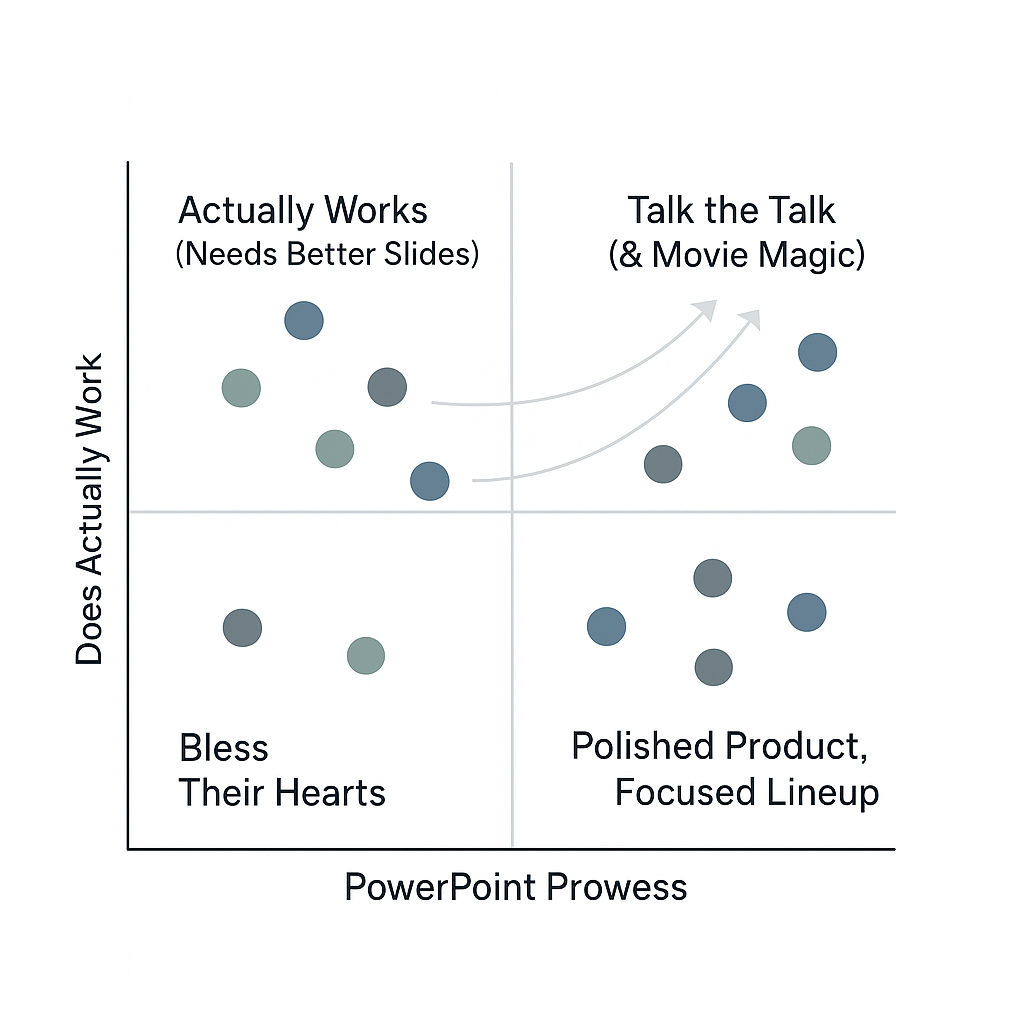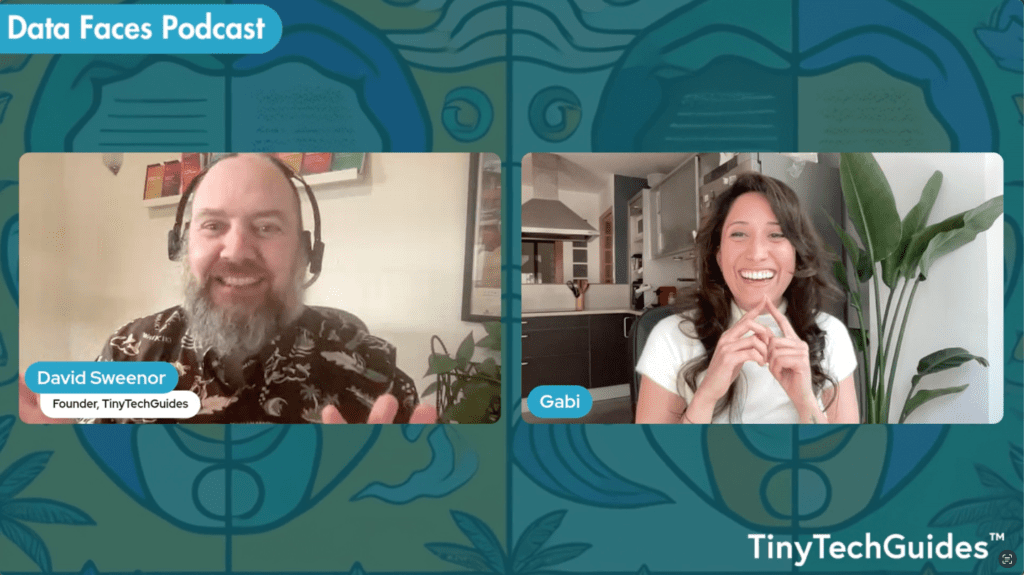
Note: this first appeared on prompts.tinytechguides.com, sign up to be the first to know.
Introduction
Are you a B2B SaaS Product Marketing Manager (PMM) feeling the pressure to deliver A+ results with limited resources? You’re not alone. In today’s dog-eat-dog world, PMMs are expected to wear multiple hats and be experts in their products, solutions, technologies, partner ecosystems, customers, industries, and competitors, with shrinking budgets and lean teams.
In 2025, digital self-serve channels are expected to dominate large B2B transactions, with over half of deals exceeding US$1 million projected to be processed through vendor websites and marketplaces.[1] This shift is driven by Millennials and Gen Z buyers making more purchasing decisions. Simultaneously, AI-driven personalization delivers hyper-personalized experiences at scale. It’s no secret that B2B brands rely on AI to analyze data, predict customer behavior, and tailor content to individual preferences. But, have you considered who’s tasked with orchestrating much of this work? PMMs.
Unfortunately, in 2024, businesses cut PMM team resources to their breaking point. With shrinking budgets, leaner teams, and ever-increasing demands on their time, they face mounting pressure to deliver exceptional results. Ineffective PMMs in this environment can lead to lower conversion rates, decreased customer lifetime value, and a weakened competitive position in the market.
This article provides a practical framework for learning more about prompt engineering. It provides PMMs with an introduction to generative AI so they can understand its full potential and maximize their impact with limited resources. This is the first in a series of articles I intend to write with subsequent articles providing detailed prompts and workflows to help with being a PMM–positioning, messaging, competitive intelligence, sales enablement, personas, and more. So, be sure to follow and subscribe so you don’t miss out on 10-xing your productivity.
Core Principles for Effective Prompt Engineering
To use AI effectively in PMM, it’s important to understand the core principles that guide successful prompt creation. These principles—customer-centricity, value proposition clarity, and go-to-market fit—ensure that your prompts generate high-quality, relevant, and impactful AI outputs. Let’s explore each principle and how it applies to prompt engineering.
Customer-Centricity
At the heart of impactful PMM lies a deep understanding of your customers and prospects. This means going beyond basic demographics, firmographics, and technographics. Developing this customer-centricity requires understanding their specific needs, challenges, and motivations across different domains and industries. Generative AI can analyze customer feedback at scale, identify patterns and trends in customer reviews, and generate detailed personas with just a few well-designed prompts.
For instance, instead of manually sifting through hundreds of customer reviews on G2 Crowd, Trust Radius, or Gartner Peer Insights, you can prompt your AI tool of choice with a simple request like, “Analyze customer reviews and identify the top three reasons why customers choose our product over competitors.” The AI can then quickly analyze the data and provide insights to inform your positioning and messaging.
AI can also help you craft personalized messaging for different customer segments and industries based on their individual needs and preferences. By prompting your AI with a request like, “Generate three messaging variations for our new product feature, each targeting a different customer persona (e.g., IT Manager, Marketing Director, CEO),” you can ensure that your message resonates with each segment and drives engagement.
And don’t forget the importance of continuous feedback integration. Actively solicit and integrate customer feedback to ensure your messaging hits the mark. Load in your surveys, Gong call transcripts, and Reddit posts, so AI can make sense of the disparate data and quickly identify areas for improvement and adaptation. For example, you could ask your AI brainstorming buddy to “summarize the key themes and sentiment expressed in the latest call transcripts.”
Value Proposition Clarity
Clearly articulating your value proposition is essential for effective PMM. This means defining what differentiates your solution and communicating it concisely, persuasively, and creatively. Generative AI can help with this too.
AI can analyze your product’s capabilities and benefits to generate compelling language that highlights your unique selling proposition (USP) with just a few prompts. For example, you could ask your AI tool to “Generate three concise value proposition statements that highlight the key differentiators of our product.”
Is your marketing too technical and centered around speeds and feeds? AI can help you shift the focus from features to the tangible persona-based value your solution delivers. By prompting AI to “Translate these three product capabilities into customer benefits that address the pain points of [target customer segment],” you can ensure that your messaging resonates with your audience and drives action.
Do you remember the importance of using persuasive language that speaks directly to your target audience? AI can help refine your messaging by suggesting alternative phrasing, identifying stronger verbs, and ensuring your language resonates with your target audience. A useful prompt could be, “As a CRO expert, revise this marketing copy to be more concise and persuasive for a technical audience.”
Go-to-Market Fit
Aligning your messaging with the buyer’s journey and optimizing your content for each stage of the funnel is crucial for PMM success. Did you guess it? Yes, generative AI can help with this too.
By understanding the buyer’s journey, you can craft prompts that generate content tailored to each stage, from awareness to decision. For example, you could ask AI, “As an SEO expert, generate five blog post titles that would attract a reader who is in the awareness stage of the buying cycle for [product category].”
AI can also help generate different content formats (blog posts, white papers, case studies, videos, demos) optimized for each stage of the funnel. For instance, you could prompt your AI to “Create an outline for a case study showcasing how [customer] achieved [positive outcome] using our product.”
Finally, don’t forget the importance of channel optimization. AI is great at creating riffs on tentpole content. AI can analyze your target audience’s online behavior and suggest the most effective channels for reaching them. You might ask, “Based on the demographics and interests of our target personas, which social media platforms are most likely to generate engagement?”
Boosting Your PMM Productivity
Prioritization and Focus
With limited time and resources, it’s essential to focus on high-impact activities. Instead of spreading yourself too thin across multiple minor tasks, concentrate on those that will generate the greatest return. This means strategically allocating your time and energy to the areas where you can make the biggest difference.
Crafting Compelling Messaging
Refining and tailoring your core value proposition to specific customer segments is paramount for success. This foundational messaging framework serves as the bedrock of all your marketing efforts. You can use an AI tool to analyze competitor messaging and identify areas where your value proposition can be differentiated. A prompt like, “Analyze the websites of [competitor 1], [competitor 2], and [competitor 3] and identify the key messages they use to position their products,” can reveal valuable insights and opportunities for differentiation.
Content Development
Creating high-quality content that resonates with your target audience and guides them through the buyer’s journey is another area for PMMs. Gen AI can help you streamline this process by generating content briefs that include target keywords, audience personas, and desired outcomes. A prompt like, “Create a content brief for a blog post targeting [audience] about the benefits of [product feature]”, can provide a solid starting point for your content creation efforts.
Competitive Analysis
Staying ahead of the competition requires ongoing analysis of their messaging, positioning, and activities. Gen AI can assist you in summarizing key takeaways from competitor announcements, product launches, YouTube demos, and marketing campaigns. A simple prompt like, “Summarize the key announcements from [competitor]’s latest product launch event”, can save you valuable time and provide the essential information you need.
Mastering the Art of Prompt Engineering
To get the best outputs from AI, you have to give it good inputs. This is known as prompt engineering. This involves crafting clear, concise, and specific prompts that guide the AI to generate the desired output. In subsequent blog posts, I will provide much more specific prompt examples so be sure to follow and subscribe so you don’t miss out.
Clarity
Use clear and concise language in your prompts, breaking down complex tasks into smaller, more manageable steps. Instead of asking “write a white paper”, try a more specific prompt like, “generate an outline for a white paper about [topic]”, followed by individual prompts for each section.
Context
Provide clear instructions and relevant information to guide the AI’s output. When requesting social media copy, for example, specify the platform (e.g., LinkedIn, Twitter), target audience, desired tone, and relevant hashtags.
Specificity
Clearly define the desired output format and level of detail. When requesting blog post ideas, specify the desired word count, target keywords, intended audience, and preferred writing style (e.g., informative, persuasive, humorous).
AI Tools for PMMs
Here are examples of how different AI tools can be used to streamline various PMM tasks:
- Gemini: “Analyze the strengths and weaknesses of our competitor’s messaging based on their latest marketing campaign.”
- ChatGPT: “Draft a series of email subject lines for a nurture campaign targeting leads who have downloaded our latest ebook.”
- Perplexity: “Identify the top 5 industry blogs that our target audience frequently reads.”
By prioritizing your efforts and mastering prompt engineering, you can significantly enhance your productivity and achieve greater impact as a PMM.
Conclusion
As B2B SaaS PMMs navigate an increasingly complex and demanding landscape, a strong PMM strategy is essential for driving customer acquisition, accelerating growth, and building a lasting brand. By focusing on customer-centricity, value proposition clarity, and go-to-market fit, PMMs can maximize their impact and drive significant business results.
So, how can you, as a B2B SaaS PMM, deliver exceptional results with limited resources? By embracing customer-centricity, clearly articulating your value proposition, ensuring go-to-market fit, prioritizing your efforts, and leveraging the power of AI tools, you can overcome the challenges and thrive in this demanding role.
Start experimenting with different prompt variations today and discover how AI can transform your PMM workflow. As the architects of perception and value, PMMs play a major role in shaping the future of B2B SaaS. Embrace the challenge, and drive your company to new heights.
As we move forward, I will be providing specific prompts for PMMs, so please be sure to like, share, follow, and subscribe so you don’t miss out.
If you enjoyed this article, please consider following me on Medium and LinkedIn.
Please consider supporting TinyTechGuides by purchasing any of the following books.
- Modern B2B Marketing: A Practioner’s Guide for Marketing Excellence
- The Generative AI Practitioner’s Guide: LLM Patterns for Enterprise Applications
- Generative AI Business Applications: An Exec Guide with Real-Life Examples and Case Studies
- Artificial Intelligence: An Executive Guide to Make AI Work for Your Business
- The CIO’s Guide to Adopting Generative AI: Five Keys to Success
- Mastering the Modern Data Stack
[1] “Forrester’s B2B Marketing & Sales Predictions 2025: More Than Half Of Large B2B Purchases Will Be Processed Through Digital Self-Serve Channels.” Business Wire, October 22, 2024. https://www.businesswire.com/news/home/20241022650139/en/Forrester%E2%80%99s-B2B-Marketing-Sales-Predictions-2025-More-Than-Half-Of-Large-B2B-Purchases-Will-Be-Processed-Through-Digital-Self-Serve-Channels.



